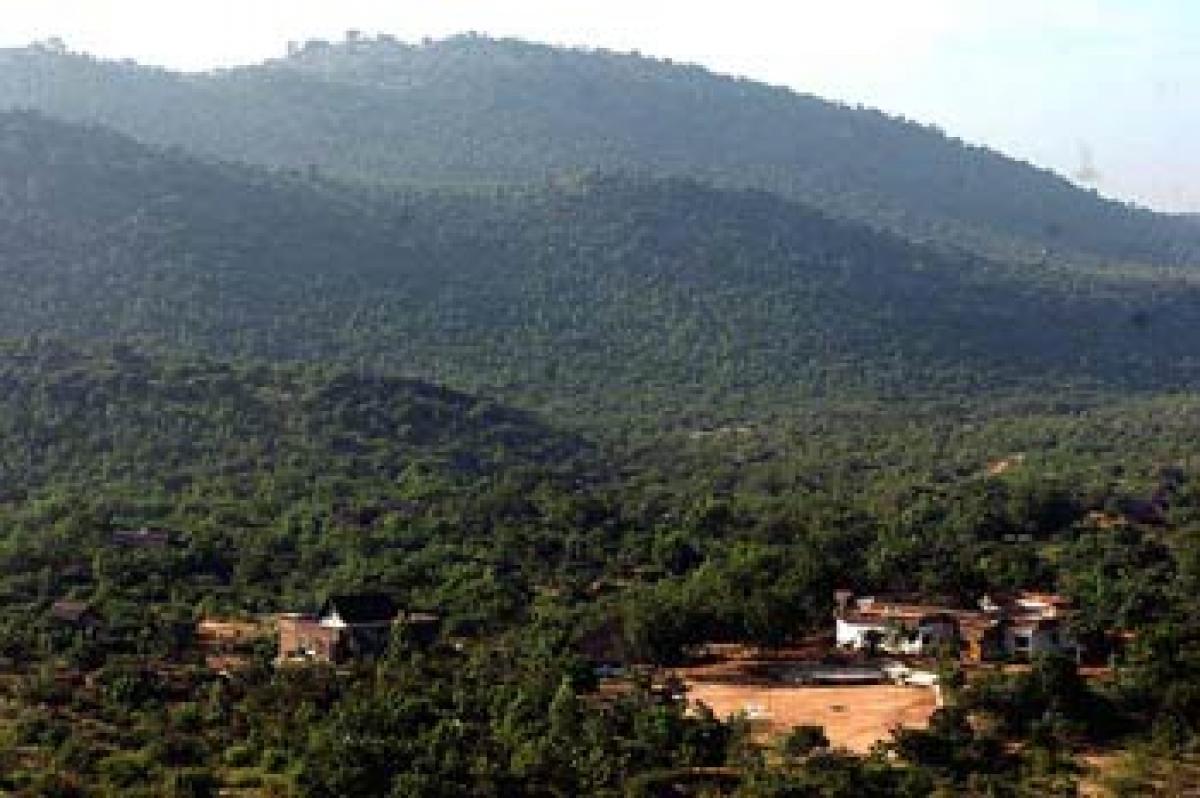Live
- Sajjala denounces Naidu’s ‘heinous politics’
- NDA parties release ‘charge sheet’ against Jagan
- Actor Nikhil Siddharth roots for TDP, takes part in campaign
- Hyderabad: Religious jingoism will not fill empty stomachs says K Chandrashekar Rao
- Hyderabad: BJP does not spare even Gods says Revanth Reddy
- Hyderabad: Will end 4% quota for Muslims in TS says Amit Shah
- Jagan failed to keep poll promises: Sharmila
- Beware of Jagan’s dramas, cautions Naidu
- Hyderabad: Ghose panel to quiz KCR
- Viveka Murder: Avinash innocent, asserts Jagan
Just In
Gangulys transform barren lands into forest in Anantapur


As one traverses through the tens of villages in the Chennekothapalle mandal one can witness the green paradise created over two decades by pioneers C K Ganguly and his wife Mary along with a friend D’Souza, who set their foot on barren lands with bald mountains at its backdrop in early 1990’s in C K Palle.
Chennekothapalle(Anantapur): As one traverses through the tens of villages in the Chennekothapalle mandal one can witness the green paradise created over two decades by pioneers C K Ganguly and his wife Mary along with a friend D’Souza, who set their foot on barren lands with bald mountains at its backdrop in early 1990’s in C K Palle.
- C K Ganguly and his wife Mary along with a friend D’Souza purchased 32 acres of land in 1990s and began planting saplings to turn it into a green agro forest
- Protection of environment and eco-restoration were their objectives
- The land was fondly named Timbaktu
- With people’s participation, they have now developed 3,000 hectares of forest land
- Wild animals and birds find their new home here
- Effective policing by people’s committees prevented tree felling
Inspired after reading a book authored by a Japanese named Masanobu Fukuoka on natural farming “The One-Straw Revolution”, they bought 32 acres of land in the village and began to plant trees regularly and help the land regenerate itself.
Along with like-minded friends, they began to nurture a dream of transforming it into a green agro forest. The couple named the land ‘Timbaktu’ which meant “the last horizon where the earth meets the sky".
Obuleshu, a resident of C K Palle recalls that the temperatures were hot then with hardly any trees or green cover in the vast stretches of land and it was difficult to find a shade giving tree. Today the greenery is there for everyone to see, he asserts.
Ganguly fondly called as Babloo is a household name in the region and protection of environment and eco-restoration had been the key thrust areas of ‘Timbaktu Collective’.
The once barren lands and bald mountains have been transformed by a green revolution ushered in by the Gangulys’ with active people’s cooperation. Women’s cooperatives, empowerment through savings and credit societies, organic farming, nature schools, water conservation and rural enterprise etc are other pet areas of the Timbaktu.
Interacting with The Hans India Babloo says, “We began by constructing small earthen bunds and small rock-filled check dams. Water-harvesting trenches were dug in the revenue wastelands belonging to Kogira, Kambalapalli and Shyapuram villages of Roddam Mandal and Mushtikovela, Subbarayunipalli and Guvvala govindam palli villages of Chennakothapalli mandal.
The massive tree plantation campaign was all part of ‘operation Kalpavalle Forest’, he adds. The idea was to plug the gullies so as to reduce the run-off and get as much water as possible to stay on the land and percolate into the soil. Later, bigger check-dams and rock-filled dams were built to save as much rainwater as possible. Today, the main check dam of Timbaktu holds water sufficient for almost five months, he revealed.
What initially started with 32 acres of barren land has now spread to over 3,000 hectares covering seven villages of wasteland and it has been transformed into a forest. Echoing the same sentiments of several villagers who are part of the Timbaktu movement, Pothanna of Dcharampalle stated that he spent 18 years as a forest watcher in the Kalpavalle forests and presided over forest protection committees with a membership of 70 people.
Due to effective policing by the people’s committees, tree felling had been checked effectively, he adds. Anantharam of Kogira village says, “Those days these lands were barren. All these miles of greenery you now see are trees planted by us”, says Anantharam of Kogira village with a sense of pride. “We plant 10 acres every year.
This ensures that, over the years, a new generation of forest comes up. Each watcher was given the task of planting 1,200 tamarind plants and their maintenance,” he added. The work done by Timbaktu has had tremendous impact not only on the people but also for the birds and animals in the area. Many animals have returned to the area including wild boars, jackals, foxes, bears, wolves, deer, leopards and many, many varieties of birds.

© 2024 Hyderabad Media House Limited/The Hans India. All rights reserved. Powered by hocalwire.com






